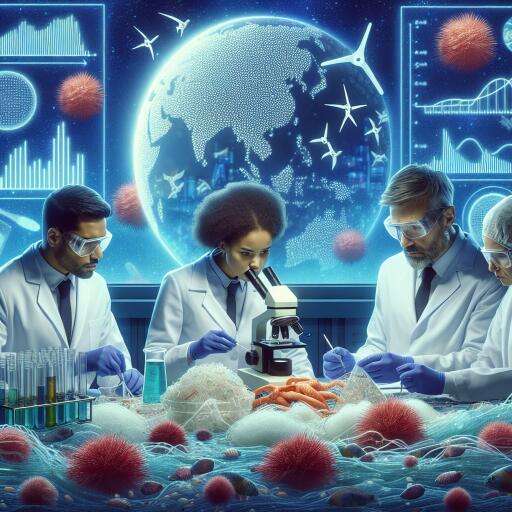
Unveiling the Hidden Threats: The Peril of Plastics in Our Seafood
In the vast and uncharted depths of the ocean, a silent crisis is unfolding. It’s a problem that bridges the gap between what we eat and the unseen consequences of our consumption habits on marine life. Concern is mounting among scientists over the insidious spread of plastic pollution, which now burdens marine species in even the most remote parts of the ocean.
The earth’s waters, a cradle of biodiversity, are becoming cluttered with plastics that descend into the abyss, affecting creatures that dwell on the seafloor. Recent research has brought to light the extent of this issue, highlighting the varied ways through which different marine species are exposed to and interact with these contaminants.
Investigations into the lives of sea creatures from diverse habitats, particularly those in regions notorious for plastic pollution like the Yellow and Mediterranean Seas, reveal troubling findings. Animals in these locales are found to bear the most significant brunt of plastic ingestion, with microplastics identified within sea life in over 90% of examined cases. Sea inhabitants, including crabs, sea urchins, and squid, are at the forefront of this crisis, often misidentifying plastic as food due to their dietary habits.
However, not all sea life is equally vulnerable to this menace. Filter feeders, for example, possess mechanisms that better exclude plastic particles, showcasing nature’s resilience and ingenuity. Yet, the danger is not isolated to the ocean’s depths. It cascades up the food chain, implicating the very seafood that ends up on our plates.
The implications of ingesting seafood contaminated with microplastics are far reaching and still not fully understood. Research links these plastics to a host of health issues, including serious diseases and disorders, underscoring the urgency of addressing this pollution.
The insights gained from these studies are crucial for informing future conservation strategies and shaping the dialogue around the impending Global Plastics Treaty. Highlighting an inconvenient truth, the longevity of plastics in our oceans starkly contrast their fleeting utility. The call to action is clear – a reduction in plastic production, particularly single-use varieties, is paramount to safeguarding our oceans and health.
Innovation in cleaning up our oceans provides a glimmer of hope, yet the consensus remains: prevention is the only sustainable solution. By confronting the root of plastic pollution, we can start to unravel the complex web of effects it has on marine life and, by extension, our own well-being. The time to act is now, to ensure the health of our oceans for generations to come.





Leave a Reply